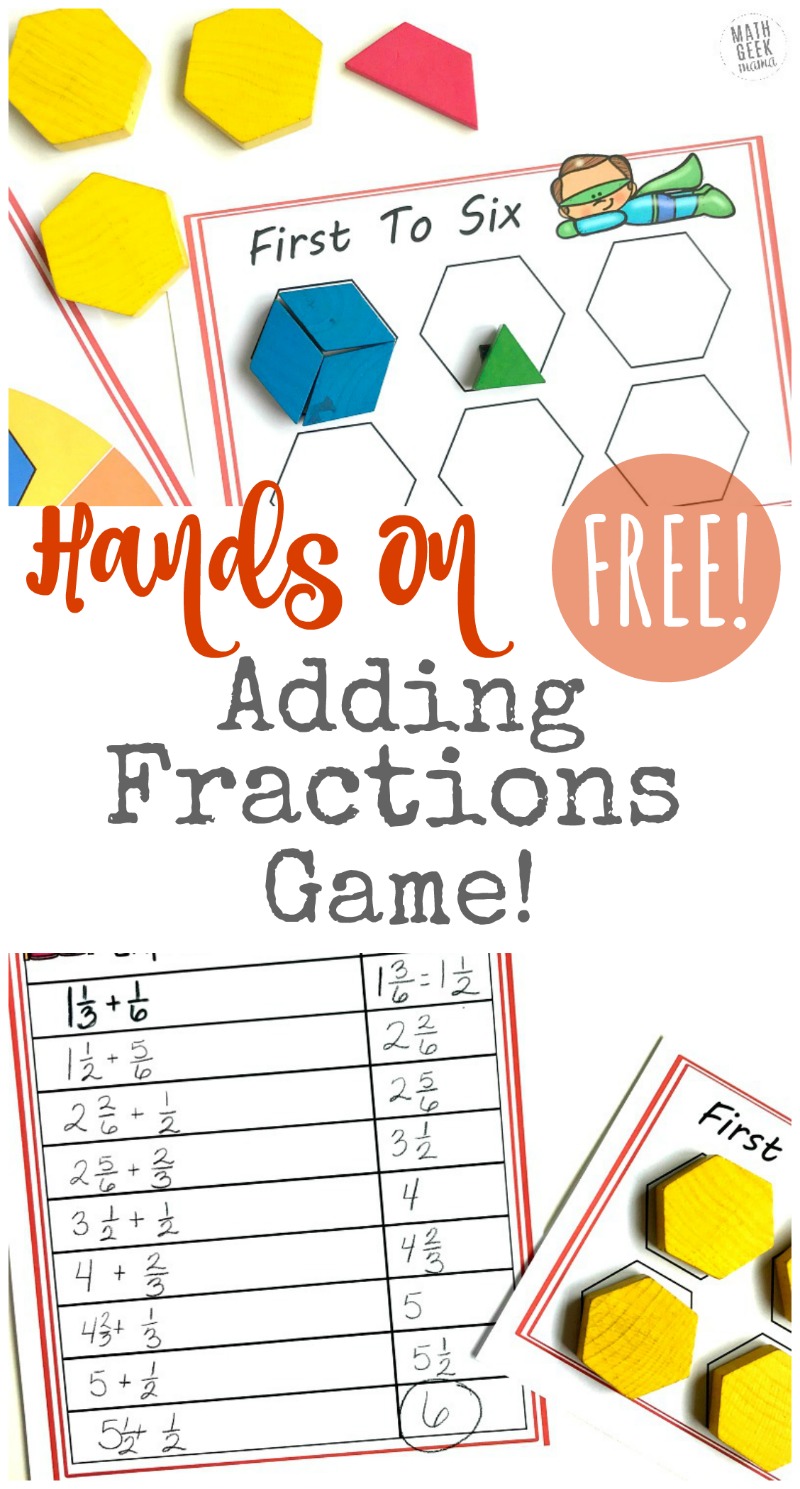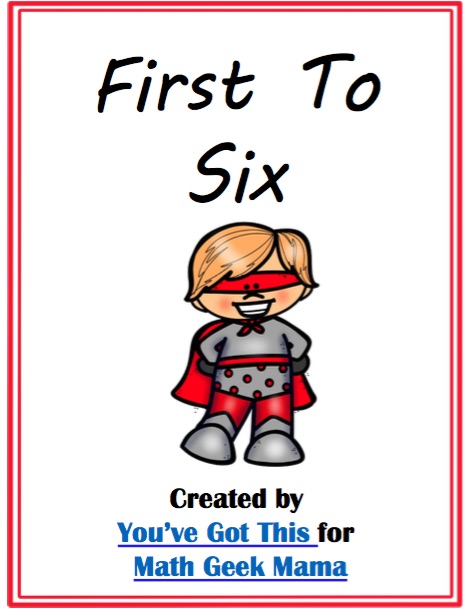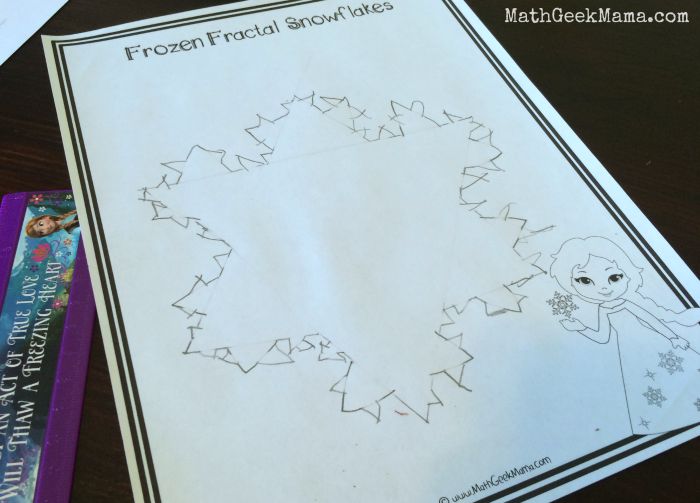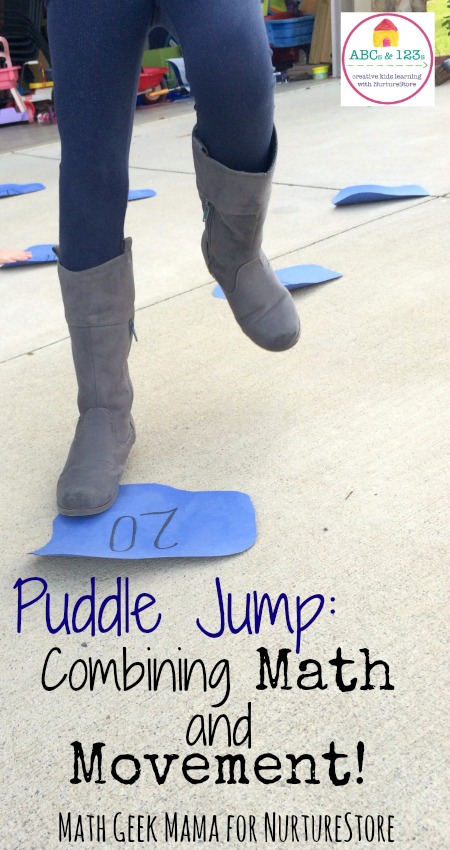Hands On Adding Fractions Game for Kids
Do you dread teaching adding fractions with unlike denominators? Does the thought of working on mixed numbers make you frown? Well, it doesn’t have to be hard and it doesn’t have to be boring. In fact, with a little practice, your children can be adding fractions without pencil and paper. Normally, I would say that games are a great way to practice and review skills. But this adding fractions game is a little different.
It is designed to allow children to build some background knowledge about adding fractions and mixed numbers. By using their knowledge of fractions and pattern blocks, children will add fractions with unlike denominators (like 1 1/2 + 2/3) as they race to be the first to six.

*Please Note: This post contains affiliate links which help support the work of this site. Read our full disclosure here.*
This is a guest post from Rachel at You’ve Got This Math.
Adding Fractions Game Prep – Work
This game has very little prep-work required.
- First, print one spinner per group.
- Next, print one game board per student (there are two on a page).
- Now, print one record sheet per student. If you would like to reuse your record sheets, you can laminate them or place them in a sheet protector.
- Finally, gather up a spinner (fidget spinner, paper clip, etc), pattern blocks, and a dry erase marker or pencil.
Then you’re ready to play and learn about fractions!
How to Play this Adding Fractions Game:
The premise is simple.
The students will take turns spinning. Whatever they spin is the number of pattern blocks they add to their game board.
The first player to fill up their mat (get six wholes) wins the game.
The catch is that while doing this, they must show what they are adding on their record sheet.

Adding Fractions with Unlike Denominators:
Let’s say a student has already filled up 1 1/3 of their mat.
They then role a triangle….and we know that a triangle is 1/6 of a hexagon.

So, on their record sheet, they would write
1 1/3 + 1/6
Then they figure out how much of their mat is filled. Well, looking at this example we can see that 1 1/2 of the hexagons are filled up.
The children keep spinning and adding up their answers until a player reaches six wholes.
Where’s the Math?
There is so much math happening in this game, but the most obvious is adding fractions.
Adding Fractions:
When we teach little ones to add, they are provided manipulative upon manipulative. They count up blocks, teddy bears, pictures on task cards, and so much more.
As children become older, we often forget that they still need manipulatives to be successful and develop math sense.
Pattern blocks are a wonderful way for children to visualize fractions, and they are also great to teach adding fractions.
In this game, children start off simple. They may simply be adding two triangles (1/6 + 1/6= 2/6).
But as the game progresses, they will be adding mixed numbers with uncommon denominators…and surprisingly it won’t be hard.
Why? Because the work has already been done while they work with the pattern blocks.
Fraction Sense:
Pattern blocks are also perfect for helping children learn about using numerators and denominators.
Assuming that the hexagon is our whole, children will be able to figure out what parts each pattern block makes up.
For example, you need two trapezoids to fill up a hexagon, so one trapezoid is 1 out of the two needed to make a whole….1/2.
Three rhombuses must be used to make a hexagon. Therefore the denominator will be three, and the numerator based on how many rhombi. One rhombus equals 1/3 while two rhombuses equal 2/3.
Equivalent fractions:
I love using pattern blocks for equivalent fractions. Once again it the perfect visual!
Let’s say I have two-thirds of a rhombus filled up, and I roll 1/2. Well, it is easy to see that that trapezoid is not going to fit on that hexagon. So some exchanging is needed.
We could use three triangles to make a trapezoid, showing us that 1/2 is equal to 3/6.

Or we could use one rhombus (because 1/3 and 2/6 are equivalent) and one triangle.
Once we do this we can see that 2/3 + 1/2 = 1 1/6.
I hope your children enjoy racing to six with this hands on adding fractions game, and build some adding fraction knowledge along the way.

{Click HERE to go to my shop and grab this FREE Adding Fractions Game!}
More Fraction Resources You Might Like:
Rachel is a homeschool mom to four little ones, ages 2 to 6. She is a former public elementary teacher, and has recently begun blogging at her page You’ve Got This. You can also find her on Facebook and Pinterest.












3 Comments
Comments are closed.